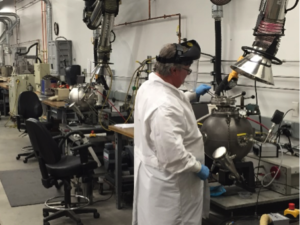Combustible Dust Testing Made Easy
Explosion protection systems are designed based on dust testing and Dust Hazard Analysis (DHA) to confirm specific parameters for mitigating a deflagration. What we’ve seen is that almost every combustible dust is different and that all but a few materials will explode under the right conditions. This knowledge mandates that every dust should be analyzed and tested to insure safety for both your facility and personnel. It’s an easy process; too simple not to get it done ASAP. SysTech can help. We’ll provide the pre-labeled package and sample bag along with instructions for the sample preparation and submittal.
Who Does The Testing?

View of combustible dust testing laboratory at the Combustion Research Center in Marlborough, Massachusetts.
IEP Technologies – HOERBIGER Safety Solutions (IEP), a SysTech represented manufacturer of explosion suppression systems, vents and isolations valves, performs combustible dust testing services at Combustion Research Center located in Marlborough, Massachusetts. Combustible dusts are routinely tested to determine key parameters including Kst (combustion speed), Pmax (dust explosivity), and AIT (auto ignition temperature). NFPA 654 Annex A.4.21 recommends determining if a dust is explosive using ASTM E 1226 (Standard Test Method for Explosibility of Dust Clouds) – a stringent Standard to which IEP tests dusts.
These values allow proper prevention measures to be implemented, saving both personnel and equipment from a potential explosion.
Don’t Make These Five Mistakes When Submitting Samples for Testing
IEP has published detailed procedures on how to collect and submit the sample. View it here
That said, we see repeated submission issues that should be considered and avoided:
- Un-usable Material – The dust sample is received in a state unsuitable for testing.
For example, large “chunks” or pieces of material need to be sieved out of the sample, or milled and processed down for testing. Samples need to be in a particle size of less than 75 microns. (75 micron sample size is the diameter of an average human hair). Additional processing (extra charge) needs to be performed by the lab before testing can begin. Not only an added expense, but added delay to getting the results.
- Insufficient Raw Material – Not sending in the required amount of sample material.
The minimum amount of material required is 2.2 lbs. When the sample material is received, it is weighed to be sure enough material is available for the tests. IEP has found that 50% of the time, additional material must be requested before they can proceed with testing. Weight of the sample is more important than the volume submitted.
- MSDS Sheet Submittal – The submitted material composition is not identified.
All material sent into the laboratory must include an MSDS sheet. MSDS sheets need to be sent ahead of time (electronic copy) for approval and subsequently included in the sample material package. This is mandatory for any laboratory analysis as it ensures the personnel in the lab are safe and aware of a potential dust sample hazard.
- Marked Materials – Packages received at the lab are unmarked.
It is imperative that the material be labeled properly for identification. All shipments to the CRC need to be labeled with the assigned project number (TS #) on the outside of the package, for identification purposes.
- Missing Paperwork – Required paperwork not completed or filled out properly.
All paperwork needs to be submitted and processed PRIOR to beginning testing; this includes a copy of the signed proposal indicating the form of payment and a signed Terms and Conditions agreement.
Get That Dust Tested!
Do you really need to get that dust tested? NFPA 654-13: “Standard for the prevention of fire and dust explosions from the manufacturing, processing, and handling of combustible particulate solids” advised consideration of the physical and chemical properties of the dust and for that information to be documented. The latest standard, NFPA 652 ”Standards on the Fundamentals of Combustible Dust” specifically states the owner is responsible for determining whether a dust is combustible or explosive and if so, for characterizing their properties as required to support the Dust Hazard Analysis.
SysTech is available to assist in understanding the procedures and filling out the proper forms. We will review the necessary steps with you to make the testing process easy and concise. Protect yourself, protect your people, and protect your facility! Get that dust tested!


